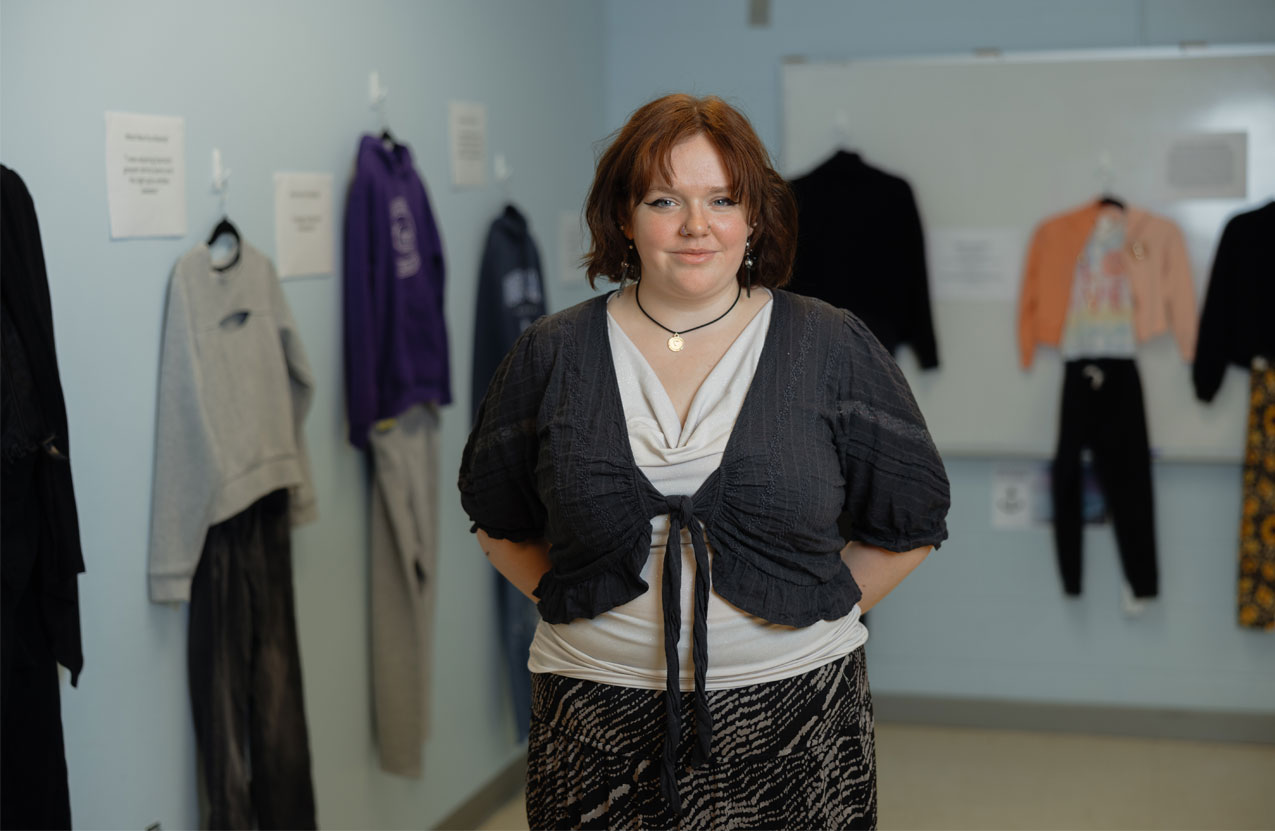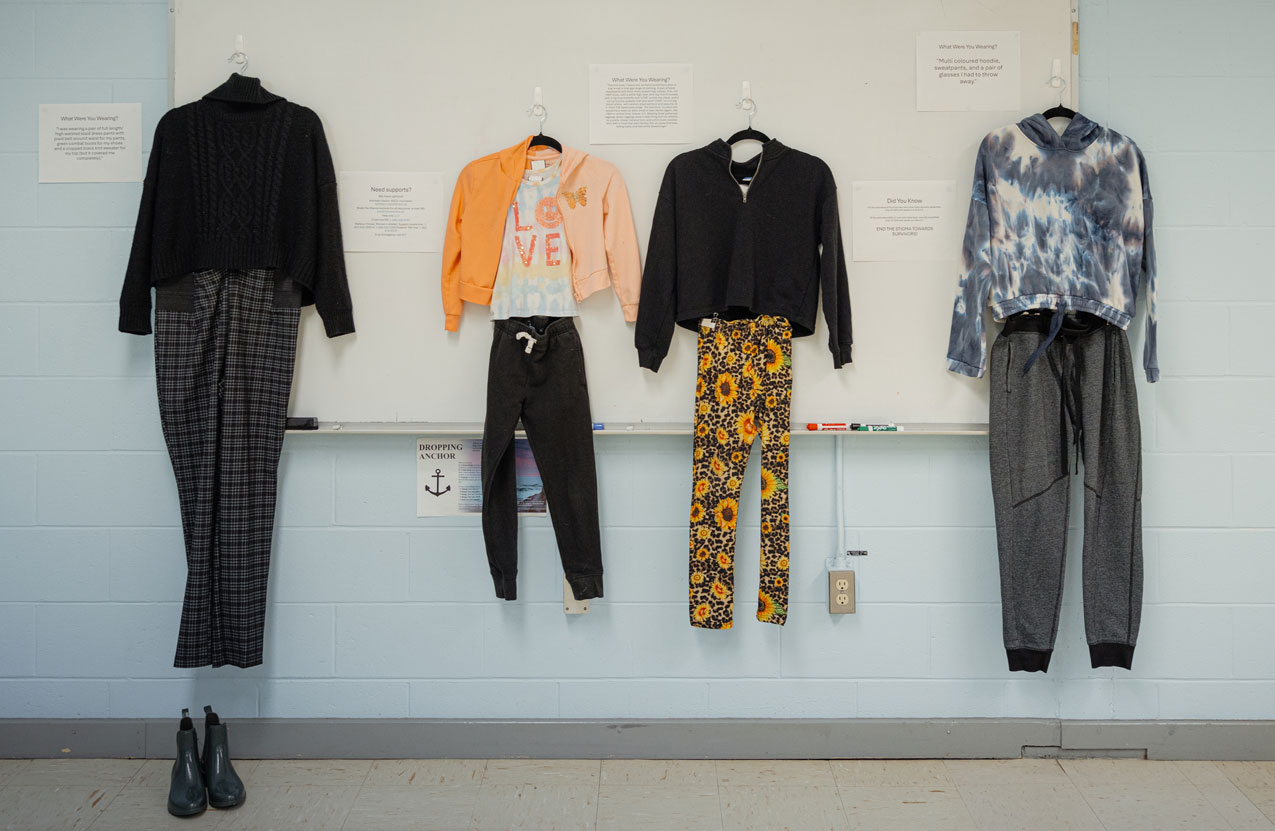Student-led campaign aims to deconstruct unconscious bias about sexual violence
Content warning: sexual violence
An NSCC classroom’s walls were lined with nearly 40 outfits earlier this spring. The clothing on display was part of the global What were you wearing? campaign at NSCC's Lunenburg Campus – one student’s effort to challenge stigmas around sexual violence.
Mia Fournier White, a second-year Disability Supports and Services student and student association president at Lunenburg Campus, has felt a personal connection to the campaign for years. She says the sense of community she’s found at NSCC gave her the courage to bring her version of the exhibit to life.
Mia learned about the What were you wearing? campaign in high school, at what she calls ‘a perfect time’ – when she had just left a very abusive relationship. The campaign is named after one of the main questions survivors are often asked after experiencing sexual violence: What were you wearing?
“There were children’s clothes, oversized hoodies, rain jackets,” says Mia. “Most of them are not the clothes that you would expect to see on display. Your unconscious bias might assume someone was wearing something really revealing. It doesn't matter if you're female, male, non-binary or what size you are. It doesn't matter what pieces of fabric you're wearing on your body at the time of your incident, ever.” These biases are what Mia wanted to dismantle with the exhibit.
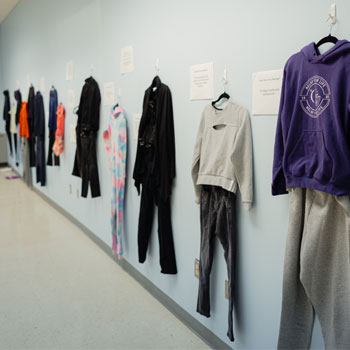
Finding a welcoming community
Prior to joining NSCC, Mia completed a few university courses but decided it wasn’t for her. During this time, she tried to organize the exhibit but experienced some roadblocks that prevented her from organizing it. Once she enrolled at NSCC, she quickly realized it was achievable.
“I felt a shift in power. Before, I was told it couldn’t happen. At NSCC, there was a strong willingness to build capacity, build a different culture. There’s empowerment and passion here. Everyone was immediately on board without questioning it,” she says.
“I came to the College not knowing anyone, and I was in a town I was new to,” says Mia. “So, I ran for student association president. I put up promotional posters across campus of my face and my blue hair, asking for votes. I thought everyone would judge me based on my photo. But to my surprise, I won. I didn’t think I would ever win a role like this.”
For the next year, Mia balanced the role of president, student and part-time worker, running meetings, coordinating campus events and completing assignments. Part of her duty as president is to complete a ‘President’s Project’ – an initiative that contributes positively to the campus community. Mia knew this was the perfect opportunity to bring the campaign to campus.
“As a campus, we wanted to support Mia however we could through her presidency to bring forward a very important topic that would spur conversation,” says Craig Collins, Lunenburg Campus principal. “This project was thought provoking and it was very brave of her to step into this space.”
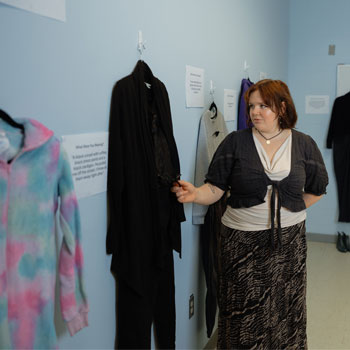
Bringing the campaign to life
Mia put out a call for exhibit submissions, receiving nearly 40 anonymous requests to participate. Each submission described the outfit the person was wearing when they were assaulted.
“I think people felt really good, and most importantly, safe, about the fact they could participate without being identified,” says Mia. “I went to Value Village and picked out the clothes to match each description and began hanging them up in the classroom. I also included some resources for anyone looking for support.”
Once the submissions were on display, it was open for anyone to visit. The feedback from the community – ‘powerful.’
“There is no doubt Mia’s exhibit resonated with many people, as evidenced by the interest expressed by media,” says Craig. “I’m so proud in how Mia handled this spotlight in sharing her thoughts on this topic.”
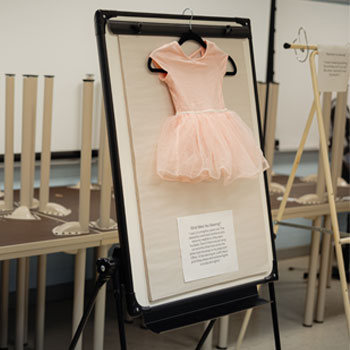
“When we finished setting it up, I just stood there for a bit before anyone came in and just took it in that I was finally able to do it,” says Mia. “I was emotional to see my outfits on display. I wanted to give everyone who took part a hug. You could feel their stories as you stepped into the room. It gave me a sense of closure, finally being able to host the exhibit. This was a form of healing.”
Mia’s next steps
Mia is eager to continue advocating for change in various areas, specifically within community services. She recently travelled to Austria with NSCC International for a social work learning experience and plans to complete her bachelor in disability studies through the 2+2 program with Toronto Metropolitan University once she graduates next year.
After a widely successful first year of her program, Mia has been voted in again as student association president for the 2024-25 school year – her final year at NSCC. Her hope is to organize a second iteration of the campaign at her campus, this time seeing it travel to all NSCC campuses throughout the school year. “The original goal was for the exhibit to start a conversation. My new goal is for that conversation to spread across the province, far beyond my small campus,” explains Mia. “This is just the beginning.”


